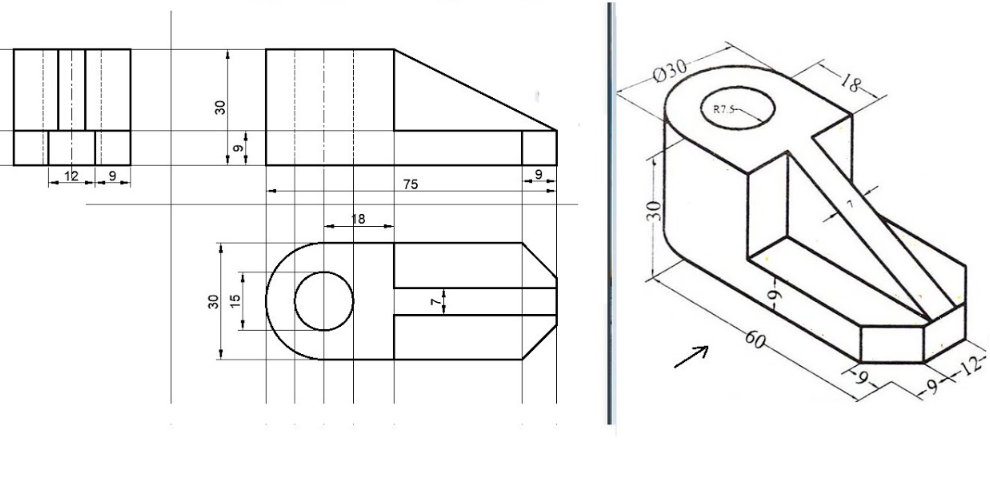The front sight is typically the most recognizable facet of a technical drawing. It supplies the most insightful viewpoint of an item, capturing its elevation and width while covering depth. This sight is commonly the very first drawing to be created and acts as the recommendation point for developing extra views. The main goal of the front sight is to provide a clear, uncomplicated depiction of the object that highlights crucial attributes, dimensions, and percentages. This view maintains the drawing procedure, allowing developers to work from this baseline point of view, guaranteeing that succeeding views align appropriately and that all featuresline up as planned.
Building upon this, the top sight enhances the front view by offering details about the depth of the item. This sight allows developers to see how broad and deep the things is, eliminating uncertainty that might emerge from the initial front view alone.
The side view, additionally known as the profile view, offers yet one more viewpoint by showing the things's height and depth. By incorporating the side view into the technical drawing, designers guarantee that all dimensions can be precisely provided, producing a detailed sight of the item.
Check out technical drawing views the necessary duty of technical drawing in design and style, highlighting crucial views such as front, top, side, area, and isometric viewpoints that guarantee accurate communication and execution in design and manufacturing.
Section views are another essential part of technical drawings. They offer a way to show the interior functions of a design that could not be evident from the outside views. A section sight is produced by slicing through the things and revealing its inner geometry.
One more valuable approach in technical drawing is isometric estimate. This view offers a three-dimensional depiction of the item, offering a helpful illusion of deepness and scale without requiring intricate point of view calculations. Isometric views can be unbelievably helpful in communicating the overall format of an item, especially to people who may not be fluent in checking out technical drawings. While isometric forecasts disappoint representing true viewpoint, they remain a preferred option for presenting concepts clearly and not surprisingly. This makes them specifically valuable during the very early style stages when responses and iterative renovation are important.
In enhancement to these fundamental views, there are different other kinds of estimates, such as orthographic and perspective forecasts, that offer various features in technical drawing. Orthographic projections are a collection of several views that independently represent the object from different angles, usually in a two-dimensional layout.

To effectively produce a technical drawing, it is vital to comprehend the conventions and signs that stand for various functions and measurements. Unreliable measurements can lead to pricey blunders throughout production, making this element of technical drawing vital for integrity and success.
A number of software application tools and applications facilitate the technical drawing procedure, enhancing the traditional hand-drawing approaches. These devices allow easy modifications, permitting for quick prototyping and version without the need to recreate drawings from scrape.
In the context of sectors today, comprehending how to use different views in technical drawing is not just important for architects and designers however also for makers, product developers, and even marketing experts. In collective environments, specifically in fields like construction and production, clear technical drawings make sure that all stakeholders-- from designers to customers-- are on the same web page.
Furthermore, with the surge of 3D printing and additive manufacturing, the importance of exact technical drawing becomes much more obvious. As these innovations remain to develop, they call for comprehensive requirements to guarantee that physical versions accurately personify the original layout. The capability to from thorough technical drawings, consisting of multiple views, is necessary for creating components that not just mesh appropriately but likewise operate successfully as part of wider systems. In addition, as industries change to computerized and digital procedures, the abilities needed to create and interpret technical drawings will certainly be critical to future skill pipes.
In conclusion, technical drawing encompasses numerous views, each of which plays a details duty in sharing essential details concerning a things. As innovation and methods for producing technical drawings continue to advancement, understanding and executing these views efficiently remains critical. As we move further right into a period identified by fast technical development, the principles of technical drawing and its accompanying views will undoubtedly remain essential in forming the future of production, design, and engineering.